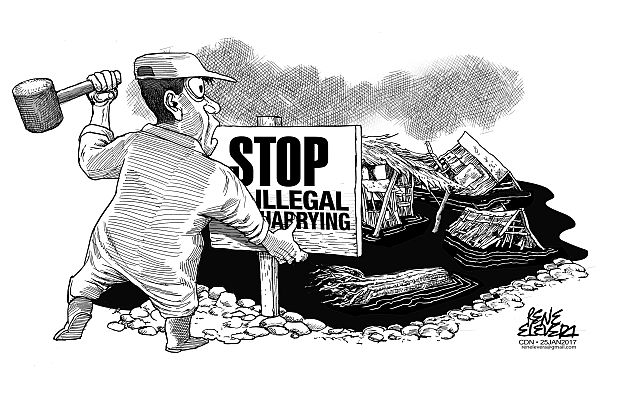
It was no small coincidence that the floods and landslides in Metro Cebu and Cebu province occurred at the same time that a city in faraway northern Mindanao experienced its worst flooding since it went through the devastation caused by Typhoon Sendong nearly six years ago.
Cagayan de Oro City experienced chest-high floodwaters and lost a life or two when a low pressure area (LPA) caused a heavy downpour last Monday.
That same LPA also caused a heavy downpour in the cities of Mandaue and Cebu, resulting in the drowning of one girl in Naga City.
In the case of Cagayan de Oro, the flooding was blamed on antiquated drainage systems which got clogged by carelessly dumped garbage as well as the denuded forests that allowed the large volume of rainfall to flood unhindered the city’s roads and streets.
It’s pretty much the same situation in the cities of Mandaue and Cebu which already had drainage master plans in place that remain unimplemented and may now be considered obsolete due to climate change, overpopulation and other new factors.
It’s only an LPA, yet the rainfall was said to be more than double the usual volume experienced for January in Cebu and Cagayan de Oro.
We can add soil erosion to the mix, not a new development by any means since forest cover in Cebu had been declining at a steady rate along with soil quality and stability due to the incessant and rampant illegal quarrying in the city’s upland barangays.
It had been said that there is a link between the aggressive construction boom in Metro Cebu and the landslides that have hit the upland barangays in recent days, notably the landslide that temporarily closed off the famed Sirao flower farms to tourists and damaged several vehicles last Tuesday.
With the demand for limestone and sand growing, suppliers had to look for some place to source their supply even if it meant slowly chipping away at whatever held up the houses built by settlers in the mountains and hills of upland Cebu City and elsewhere.
Based on the frequency with which it is happening now, it may be too late for either the Department of Environment and Natural Resources (DENR) and the local environment offices to stop illegal quarrying activities by both commercial and small-scale operators.
While the DENR should order a complete halt on quarrying operations, if possible in order to prevent the total deterioration and erosion of land in the upland areas, the settlers who live in these mountains may have to find themselves better homes to live in.
Local governments are faced with little choice but to find suitable relocation sites for these families if only to prevent them from contributing to the deterioration of these forested mountain areas that remain the first and sensible defense against flooding in Metro Cebu’s streets.